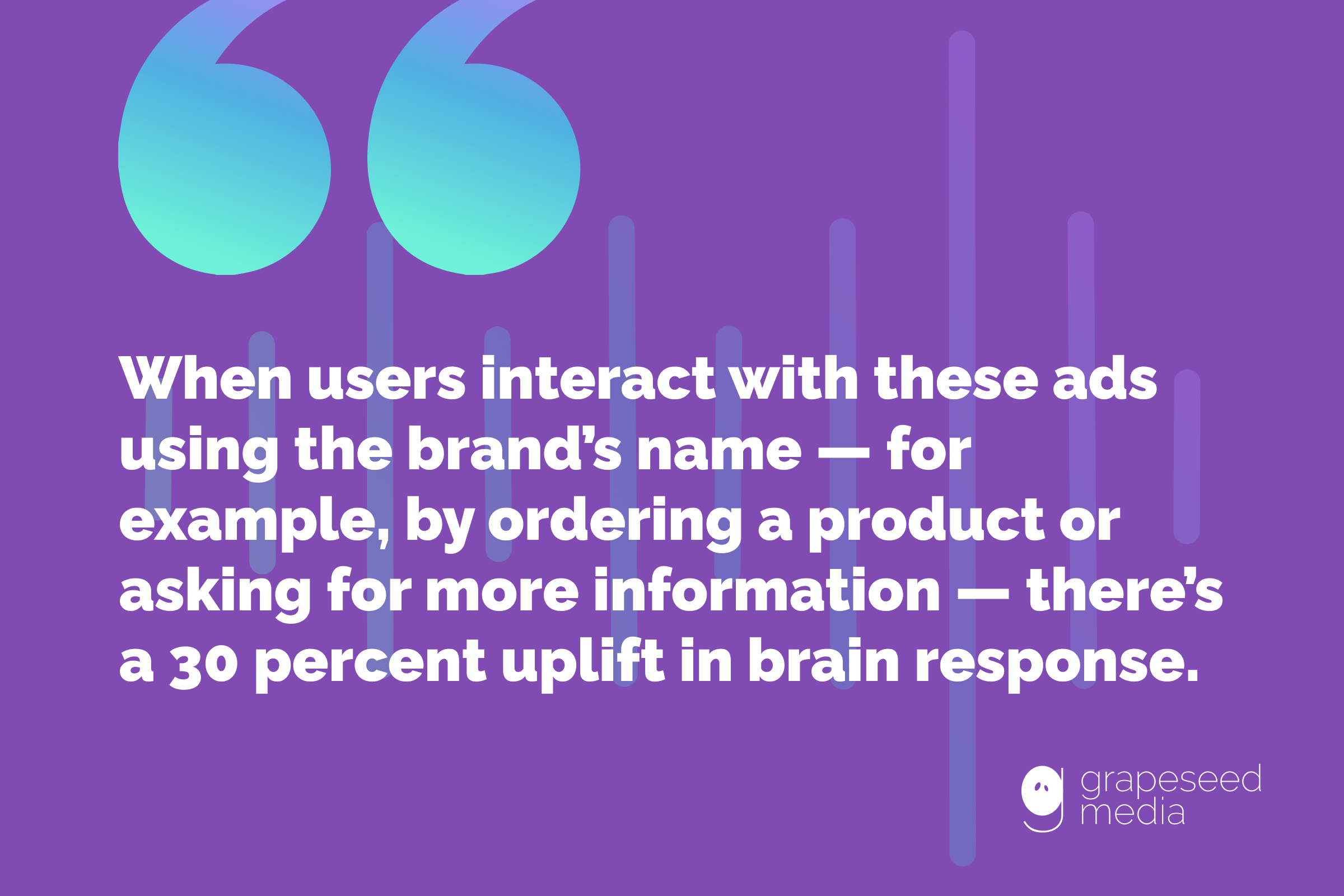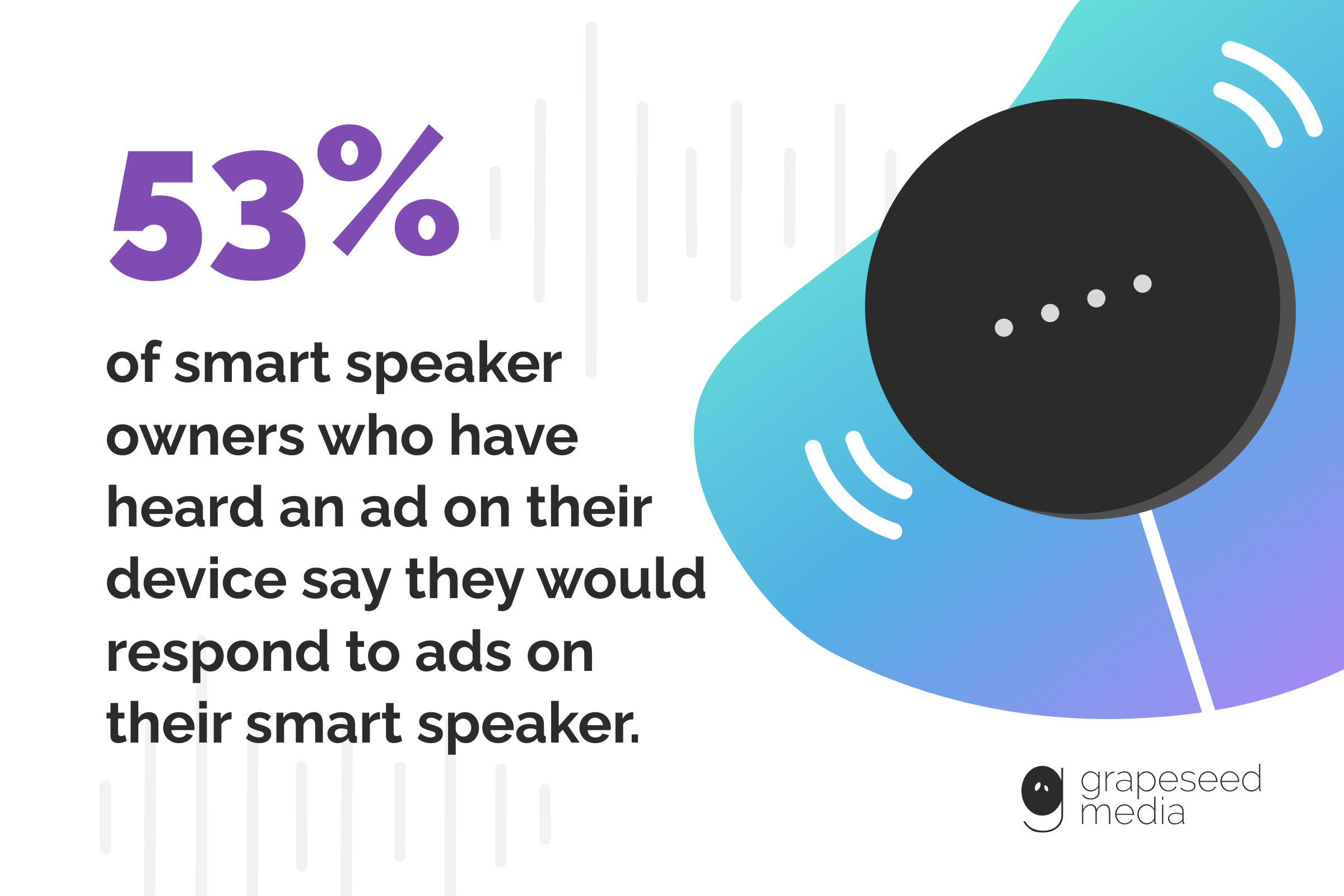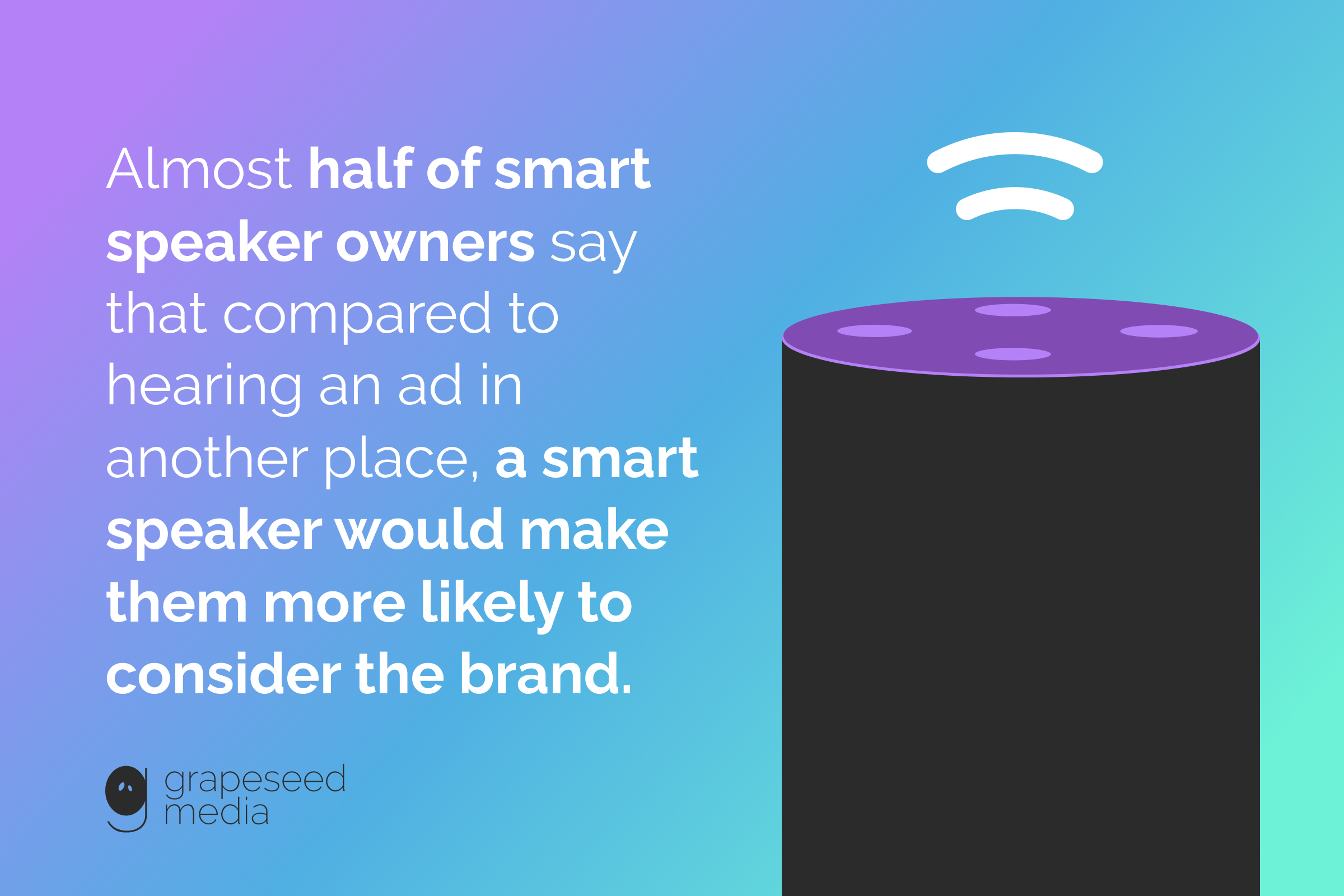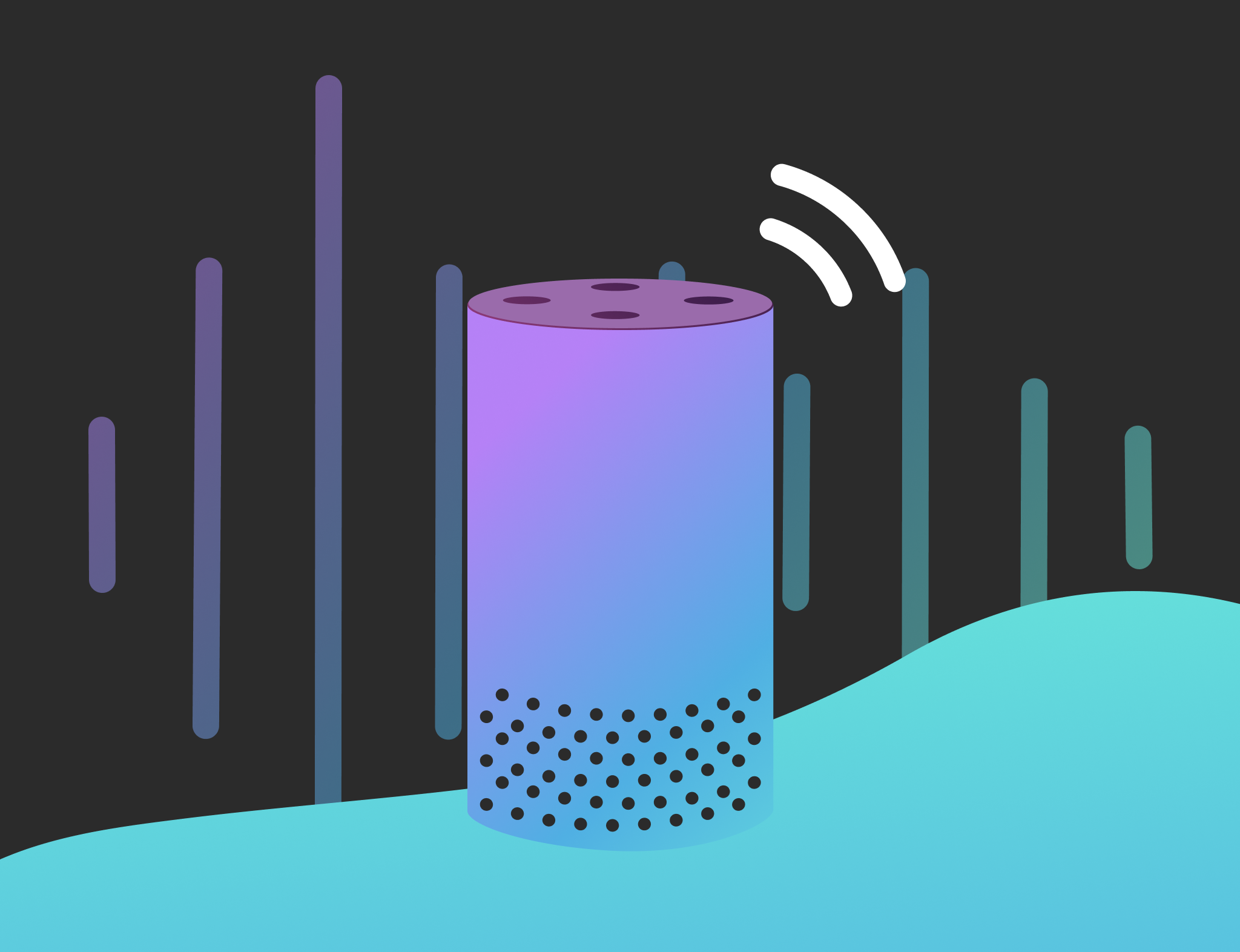The growing popularity of smart speakers is driving new developments in audio advertising. Audio has already been shown to be 25 percent more effective than other types of ads, and with the number of smart devices in homes set to reach 400 million by 2025, this development represents huge potential for audio advertising.
One way to supercharge the power of audio ads is to make them interactive. A study by Neuro-Insight, commissioned by Octave Audio, Say It Now, and Xaxis, revealed that branded smart speaker ads trigger a 25 percent increase in brain activity compared to traditional audio ads, making them more memorable and emotionally engaging.

Furthermore, receiving a reply from a smart speaker leads to 24 percent higher levels of positive emotional response, demonstrating the power of two-way communication in enhancing consumer experience.
With smart home devices projected to facilitate over $164 billion in global transactions by 2025, these findings highlight the potential of interactive audio ads to create deeper connections between brands and consumers.
In this article, we’ll walk you through the fundamentals of interactive audio ads — what they are, their benefits, and three tips for using them effectively.
What Are Interactive Audio Ads?
Interactive audio ads are a form of digital advertising that allows listeners to engage with the ad using voice commands or by clicking a button on their screen.
This innovative approach combines the convenience of voice technology with the persuasive power of audio advertising, and these ads are normally deployed on smart speakers or voice-enabled devices.
When a user hears an interactive ad, they can respond vocally, triggering specific actions such as providing more product information, adding items to a shopping cart, or navigating to a website.
For example, a local pizza restaurant might use an interactive ad to offer a special deal. Listeners can respond with a voice command to order directly through the ad, making the advertising experience more engaging and actionable.
Another example could be a local theater that uses interactive audio ads to promote its latest play. The ad could begin with a dramatic snippet from the play, capturing listeners’ attention.
The ad would then invite the listener to interact by saying, “To learn more about this play or to book tickets, just say, ‘Tell me more’ or ‘Book tickets.’” When the listener responds, the ad could provide further details about the play, offer a special discount, or directly facilitate ticket booking through voice commands.
5 Benefits of Interactive Digital Audio Ads
1. They Are More Effective than Traditional Ads
Due to the immersive and emotional nature of audio content, smart speaker ads are considered easier to recall, more engaging, and less intrusive than traditional ads by over 50 percent of listeners.
According to NPR and Edison Research, 53 percent of smart speaker owners who have heard an ad on their device say they would respond to ads on their smart speaker.

2. They Are Highly Targeted
Programmatic technology allows advertisers to target specific audiences for interactive audio ads with precision. By analyzing data such as user demographics, interests, behaviors, and even past interactions with similar content, programmatic platforms can place ads where they are most likely to be heard by the intended audience.
This ensures that the interactive elements of the ad, such as voice commands, are more effective because they reach listeners who are more likely to be interested and engage with the content. This targeted approach maximizes the impact and efficiency of advertising campaigns.
3. They Make It Easy to Take Action
Interactive audio ads streamline the process of taking action, making it convenient for listeners to respond immediately. For instance, at the end of an ad, listeners might be prompted to shake their phone to receive a coupon or scan a QR code to visit a website.
These actions are simple and intuitive, allowing for immediate engagement without disrupting the listener’s current activity. This ease of interaction enhances the effectiveness of the ad by reducing barriers to action, leading to higher engagement and conversion rates.
Similarly, interactive audio ads can make the checkout process quicker and easier by helping the listener make buying decisions and add items to their cart with minimum effort. This removes friction from the process, helping to boost conversions.
4. They Appeal to Smart Speaker Owners
Almost half of smart speaker owners say that compared to hearing an ad in another place, a smart speaker would make them more likely to consider the brand.

With the number of smart speaker owners growing every year, advertisers who harness the power of interactive audio will reap the benefits of this increasingly popular medium.
5. They Are Compatible with Podcasts
Interactive audio ads in podcasts can be highly effective, especially considering the high recall rate of 71 percent for host-read ads. These ads invite listeners to interact directly through their voice-enabled devices.
For instance, a host might mention a promo code in the ad and prompt listeners to say a specific command to their smart speaker to redeem an offer or learn more.
This approach combines the trust and engagement of host-read content with the convenience of voice interaction, enhancing the listener’s experience and increasing the likelihood of them taking the desired action.
How to Use Interactive Digital Audio Ads Effectively
Ready to start incorporating interactive audio ads into your strategy? Here are three tips to get you started.
1. Understand Your Goals
Are your goals awareness-oriented, interest-oriented, or action-oriented? How wide does your marketing campaign go — does it cover multiple funnels or just one? And how do interactive digital audio ads fit into the bigger picture?
The answers to these questions will inform everything from targeting to creatives to measuring success, so make sure you consider them carefully.
2. Use Creative Calls to Action (CTAs)
Don’t limit yourself to a simple “Buy now” CTA — the action that the listener takes at the end of your ad doesn’t necessarily have to be a purchase.
For instance, if your ad speaks about a specific location, like a farm that you source your produce from, the listener could tap on their screen to see the farm’s website and to get a better feel for your product.
3. Get Feedback from Your Audience
Interactive digital audio ads open up the opportunity to go hyper-local with your campaigns, which can drive engagement.
To understand the impact of your ads, reach out to your listeners to conduct surveys and feedback rounds.
Even something as simple as asking your audience about their favorite feature in your product can deepen the impact of your ad.
Harness the Power of Interactive Audio Ads with Grapeseed Media
With the rising popularity of smart speakers and the proven effectiveness of interactive audio, now is an exciting time for brands to experiment with this medium.
Whether you want to enhance brand recall, target specific audiences, or facilitate seamless interactions, interactive audio ads open new avenues for connecting with your customers.
To make the most of your investment in interactive audio ads, consider partnering with a specialized agency like Grapeseed Media. Our team of programmatic experts can help you leverage these new channels to amplify your advertising efforts.
To learn more, visit our Digital Audio Solutions page or get in touch with us.

